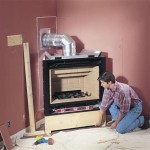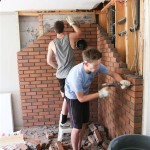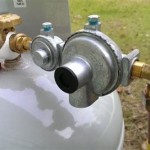Replacing a Fireplace with a Wood Stove: A Comprehensive Guide
The decision to replace a traditional fireplace with a wood stove involves considering numerous factors related to efficiency, safety, aesthetics, and regulatory compliance. While both appliances provide supplemental heating and a visual connection to the warmth of a fire, their operational characteristics and overall impact on a home differ significantly. This article provides a detailed examination of the considerations involved in undertaking such a project.
Fireplaces, traditionally built into the structure of a home, often function primarily as decorative features with limited heating efficiency. A substantial portion of the heat generated by a fireplace is lost up the chimney, drawing warm air from the room and exacerbating heat loss. Moreover, the open nature of the firebox allows for significant air infiltration, contributing to drafts and potentially increasing overall heating costs. In contrast, a wood stove is a closed combustion system designed for more efficient heat transfer. Modern wood stoves incorporate advanced combustion technologies to minimize emissions and maximize heat output.
The process of replacing a fireplace with a wood stove involves several stages, from initial assessment and planning to installation and inspection. Careful consideration of each stage is crucial to ensure a safe and effective transition.
Assessing Your Needs and Evaluating the Existing Fireplace
Before embarking on the replacement project, a thorough assessment of your heating needs is essential. Determine the square footage that you intend to heat with the wood stove and consider the insulation levels of your home. This assessment will help you determine the appropriate size and heat output of the wood stove needed to effectively warm your living space. Oversizing a wood stove can lead to overheating and discomfort, while undersizing will result in insufficient heating.
Next, carefully evaluate the existing fireplace and its surrounding structure. Inspect the chimney for any signs of damage, such as cracks, spalling, or loose bricks. A damaged chimney poses a significant safety hazard and must be repaired or relined before installing a wood stove. The condition of the hearth and the firebox should also be assessed to determine the extent of modifications required to accommodate the new wood stove. Existing fireplace openings are often larger than those required for a wood stove. A smaller opening contributes to the improved efficiency inherent in wood stove operation. Some modification of the fireplace surround may be beneficial or necessary.
Furthermore, consider the location of the fireplace and how it will impact the placement of the wood stove. Ensure that there is adequate clearance around the stove for safe operation and to prevent combustible materials from overheating. Local building codes and manufacturer's specifications will dictate the required clearances. Adhering to these guidelines is paramount to preventing fires.
Selecting the Right Wood Stove and Chimney System
Choosing the right wood stove involves considering several factors, including heating capacity, efficiency, emissions, style, and budget. Wood stoves are typically rated by their heat output in British Thermal Units (BTUs) per hour and the square footage they can effectively heat. Select a stove that aligns with the earlier assessment of your heating requirements. Look for models that are certified by the Environmental Protection Agency (EPA) for low emissions. EPA-certified stoves are significantly cleaner-burning than older, non-certified models.
The design of the stove is also a consideration. Wood stoves are available in a variety of styles, from traditional cast iron designs to modern steel frame models. Choose a style that complements the aesthetic of your home. Budgetary constraints will also factor into your decision-making process, as wood stoves vary widely in price. Balancing functionality, aesthetics, and cost is critical in selecting the most suitable wood stove for your needs.
The chimney system is an equally crucial component of the wood stove installation. In many cases, the existing fireplace chimney can be repurposed for use with a wood stove, but it is essential to ensure that the chimney is in good condition and properly sized for the new appliance. A chimney inspection by a qualified professional is highly recommended. If the existing chimney is damaged or unsuitable, a new chimney liner or a completely new chimney system may be required.
Most modern wood stoves require a six-inch diameter chimney. The liner must be made of stainless steel and insulated to ensure proper draft and prevent condensation. The height of the chimney is also important. It should extend at least three feet above the highest point where it exits the roof and two feet higher than any structure within ten feet. Proper chimney height ensures adequate draft and prevents smoke from re-entering the home.
Installation and Regulatory Compliance
The installation of a wood stove is a complex process that requires careful attention to detail and adherence to building codes and manufacturer's specifications. While some homeowners may attempt a DIY installation, it is generally recommended to hire a qualified professional. A professional installer has the expertise and experience to ensure that the installation is done safely and correctly. Moreover, in many jurisdictions, a professional installation is required to obtain the necessary permits and inspections.
Before beginning the installation, obtain the necessary permits from your local building department. Building codes vary widely, so it is essential to be familiar with the specific requirements in your area. The permit process typically involves submitting plans and specifications for the installation and paying a fee. After the installation is complete, a building inspector will visit your home to verify that the work meets code requirements.
The installation process typically involves preparing the hearth, connecting the stove to the chimney, and ensuring proper clearances around the stove. The hearth must be made of non-combustible material and extend a specified distance in front of and to the sides of the stove. The stovepipe, which connects the stove to the chimney, must be properly installed and sealed to prevent leaks. Clearances around the stove must be maintained to prevent combustible materials from overheating and catching fire.
Once the installation is complete, it is crucial to have the stove inspected by a qualified professional. The inspector will verify that the installation meets code requirements and that the stove is operating safely. They will also check the draft of the chimney and ensure that there are no leaks or other problems. A professional inspection provides peace of mind and ensures that the wood stove is operating efficiently and safely.
Following the installation, learn how to operate the wood stove safely and efficiently. Use only seasoned wood and avoid burning trash or other materials that can produce harmful emissions. Maintain the stove regularly and clean the chimney at least once a year to prevent creosote buildup. Creosote is a highly flammable substance that can cause chimney fires.
Replacing a fireplace with a wood stove can offer several benefits, including improved heating efficiency, reduced emissions, and increased safety. However, it is essential to carefully consider all aspects of the project and to adhere to building codes and manufacturer's specifications. By planning carefully and working with qualified professionals, homeowners can enjoy the warmth and ambiance of a wood stove while ensuring the safety and efficiency of their home heating system.
Consider fuel storage. Wood stoves require a readily available supply of seasoned firewood. Adequate space must be available for storing the wood, protecting it from the elements, and ensuring its dryness. Improperly seasoned wood burns inefficiently and produces excessive smoke, contributing to creosote buildup in the chimney.
Beyond the functional aspects, the aesthetic impact of replacing a fireplace with a wood stove should be considered. Wood stoves, while offering high heating efficiency, may not always match the existing interior decor as seamlessly as a traditional fireplace. Careful selection of a wood stove model that complements the home's style can mitigate this concern.

Converting A Fireplace To Wood Burning Stove Chesneys

Can You Install A Wood Burning Stove In An Existing Fireplace
Advice On Replacing Sheetmetal Fireplace With Wood Stove Hearth Com Forums Home

Can You Install A Wood Burning Stove In An Existing Fireplace

Converting A Fireplace To Wood Burning Stove Chesneys

How To Replace A Wood Burning Stove Forge Flame

Wood Burning Fireplaces Inserts Full Service Chimney
Wood Stove Inside Fireplace Hearth Com Forums Home

Removing An Old Woodstove Fireplace Insert Young House Love

Removing An Old Woodstove Fireplace Insert Young House Love
Related Posts








